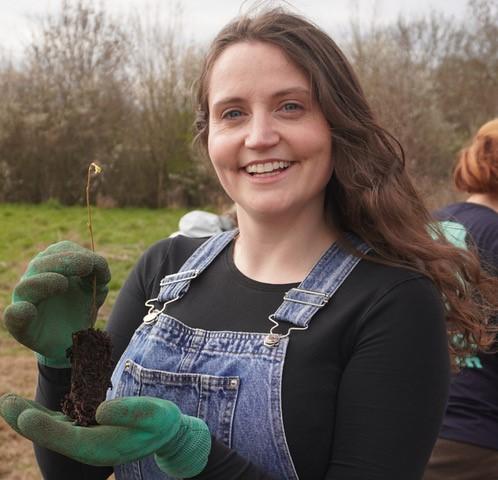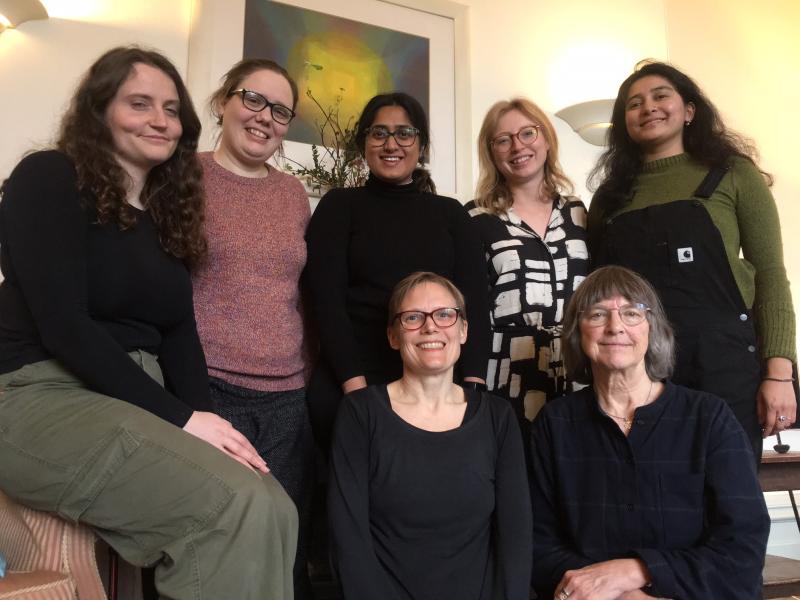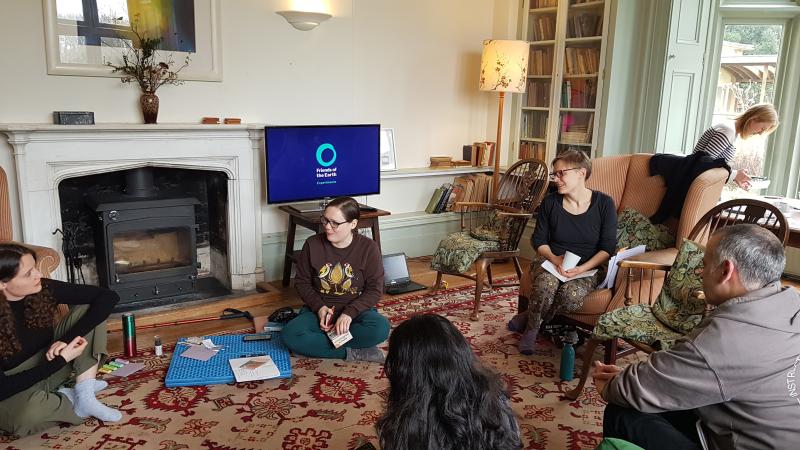Joanna Watson21 May 2024
We recently ran a design Lab to address the question How might communities use AI to work better together to improve their local environment? We invited 4 volunteers to a 5-month process to explore solutions to a local environmental problem they were interested in and used AI to foster creativity and generate ideas for community action.
Fenella is one of the coordinators of her local Friends of the Earth group in Merton, Southwest London. Her aim is to use AI to help volunteers see and share the impact of their environmental activities.
JW What motivated you to join the Lab and what is the problem you wanted to address?
FC Our local group does great work but as we’re a group of volunteers we don’t always have the time to engage our local community as effectively as we would like or to share the impact of the work we do. I wanted to know whether a local voluntary group like Merton Friends of the Earth could use AI to visualise that impact and engage many more local people in what we’re doing.
I only knew a little bit about AI – it was a lunchtime lecture by Friends of the Earth that started things off. At that stage I was thinking very practically about using AI to help us schedule our communications like newsletters for example. I didn’t know anything about systems thinking at that point. I thought I’d take on the AI role in our group – to learn more about the tool but nothing visual. I thought I’d gain more technical knowledge and skills and maybe I could teach a couple of others.
JW: So you started the process and came to Hawkwood, the Centre for FutureThinking, on a 3 day residential with the Experiments team and 3 other participants to ground yourself in exploring the benefits and problems of AI and your problem challenges. Tell us about your experience.
FC So Hawkwood blew my mind in 50 million different directions. I’d never been on a retreat or eaten exclusively vegan meals or done t’ai chi in the morning or been asked my opinion about what I thought about future stories, or done Futures thinking. I was very exhausted after the first day. I suppose it was being asked to step up – everyone was bringing something to this and I realised I had something to bring too.
JW: What did you find the most challenging?
FC Dream scaping and tech futures were difficult. I don’t see myself as a designer or a thinker, I’m the practical person - but I really enjoyed it. It was a bit intimidating to start with. I felt more comfortable when we started talking about the tools – that was about learning. We’re all on the journey together and we can learn and grow together.
Other people appeared more at ease but a really useful thing was getting out of my depth and out of my comfort zone. It felt relentless – you have to keep pushing through. I’m really glad I kept going and I do feel like there’s been a return to an authenticity of self that comes from asking myself a new question about how I’m seeing things every week. More reading beforehand would have been beneficial because I was shocked when I didn’t understand the language. But I became very enthused once I’d connected and made friends and I became a lot more comfortable.
Presenting my ideas to the Swarm and the Showcase – the big milestones in the Lab process- was terrifying but the industry professionals were kind and generous and it’s given me a lot of confidence to go out and talk to people.
JW: What did you enjoy?
FC I really appreciated introducing ideas like discussing how you feel in a space before we start a session – and going out into nature to walk and talk was really grounding. I will try and introduce this in other things I’m doing.
Dreaming and storytelling made me feel more at home. How do we tell a story about what we’re doing? AI is a key – it unlocks so many things that I can use and are transferable. I felt I’d been torn open in the best possible way. Some ideas were really helpful – learning about different technologies, developing tangible ideas – I understand what this is now and I carried this positivity into coming up with experiments ideas.
JW: where have you found AI useful?
I’m never going to be a tech genius but I’m interested in things that bring people together. I’ve been having conversations with people in my community as I feel I have a duty, after the unique experience of the Lab, to share what I’ve learned and a passionate desire to help people do positive things by using AI.
There is more than one way to help people using this technology – I don’t have to invent a new app, I can be someone who facilitates others. I love talking and teaching people. I have concerns about the impact of AI’s footprint on people and the environment and it makes me uncomfortable using it as a tool, but as people are going to be using it anyway, at least we should make sure that they are using it to care for the environment.
I had a couple of buddy sessions with Sadaf (another participant in the Lab) and I found using ChatGPT to role play helped my creativity and generated lots of ideas by asking AI to contribute different perspectives. Using AI creatively has helped me when I was anxious. I made lots of GPTs and it’s been really useful. It gave me licence to think freely.
JW And where will you use AI going forward?
FC AI has helped me design my landing page. I’m planning to design and run a community workshop exploring how to use AI to visualise a better future for our local environment and how we can use it to show the impact of our work. We’ll be looking at questions like ‘How to get inspired by local environmental projects? What is AI and how can it help us make art? What AI tools are there and how can we use them? Generating ideas based on what we’ve learned’.
I’ll use AI to design communications to get more people involved in the community workshop by a better understanding of what people need. And with design and structure of the workshop. I want to get more people from different groups involved and it’s taught me how limited is my understanding of their needs. AI will help me find and engage with these people in a way that will be interesting to them. Then I can use that info and their feedback to design more workshops.
I am excited to see where AI takes me but I’ve been on a journey back to myself. It’s great to feel I don’t have to let an important part of me go to become proficient in using AI. The Lab has let me see that creativity can sit in this world and that it’s ok if I’m not a scientist or an IT whizz! This has allowed me to feel that I can still have things to offer and it helped me develop a pilot that actually feels authentic to me and to the things I care about. That journey has also helped me to be more authentic with myself outside of the project and I’m really grateful for that.
JW Will you carry on using AI?
FC: Oh yes. I’ve just started a new job at a music and arts venue on the programming side and AI helped me research this role and prepare for the interview. I’d like to bring an environmental point to my new job using AI in the best way we can and maybe help some of the artist to use AI and not be afraid of it and introduce some environmental element into the programming.
JW: We’ll be really interested to see how your workshop turns out – good luck and keep us in the loop. It’s been great working with you.





